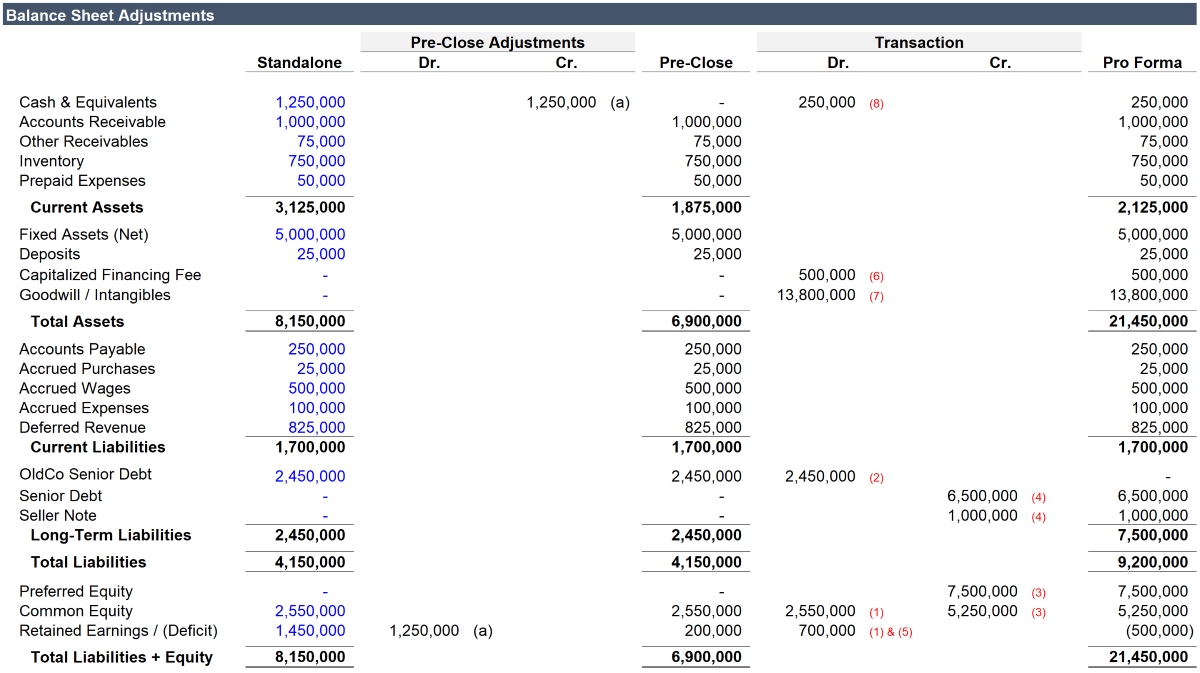

Finance
How To Invest In Low Float Stocks
Published: January 18, 2024
Learn how to invest in low float stocks and maximize your returns in the finance industry. Discover strategies and tips to make informed investment decisions.
(Many of the links in this article redirect to a specific reviewed product. Your purchase of these products through affiliate links helps to generate commission for LiveWell, at no extra cost. Learn more)
Table of Contents
Introduction
Investing in the stock market can be a lucrative venture for individuals looking to grow their wealth. While there are many different types of stocks available to investors, one category that often intrigues individuals is low float stocks. These stocks, characterized by a relatively small number of shares available for trading, can offer unique opportunities for those willing to navigate the inherent risks and challenges.
Low float stocks can be appealing to investors due to their potential for rapid price movements and volatility. With limited shares available, even small changes in demand can significantly impact the stock’s price. This volatility can present both opportunities and risks for investors.
However, it is essential to thoroughly understand the pros and cons of investing in low float stocks before diving into this niche market. In this article, we will explore what low float stocks are, weigh the advantages and disadvantages, discuss strategies for investing in low float stocks, and provide tips for successful investing in this unique market.
Whether you are a seasoned investor or just starting, this guide will equip you with the knowledge and insights needed to make informed decisions when it comes to investing in low float stocks.
What are low float stocks?
Low float stocks, also known as low floaters or micro float stocks, are stocks that have a relatively low number of shares available for trading in the market. The float refers to the number of outstanding shares that are not held by insiders or restricted from trading. In other words, it is the number of shares available to the general public for buying and selling.
Typically, low float stocks have fewer than 10 or 15 million shares outstanding, although there is no hard and fast rule regarding the exact number. These stocks often belong to small-cap or micro-cap companies with a relatively small market capitalization. Due to their limited supply, low float stocks can experience significant price movements in response to changes in demand.
One key characteristic of low float stocks is their potential for high volatility. Since the number of shares available for trading is scarce, even a small increase in buying pressure can drive the stock price up quickly, and conversely, selling pressure can lead to sharp declines. This makes low float stocks attractive to certain traders and investors who seek short-term profits or capitalize on price swings.
It’s important to note that the low float status of a stock can change over time. For example, a company may issue additional shares through a public offering, increasing its float and potentially decreasing its volatility. Conversely, a reverse stock split or significant insider buying can reduce the float and increase the likelihood of volatile price action.
Low float stocks are often associated with niche industries, emerging sectors, or companies with specific catalysts that can spark investor interest. These catalysts can include positive earnings reports, new product releases, regulatory approvals, or strategic partnerships. Investors who are willing to actively research and monitor market trends can identify potential opportunities in low float stocks.
Pros and cons of investing in low float stocks
Investing in low float stocks can offer unique opportunities, but it also comes with its fair share of risks and challenges. Understanding the pros and cons of investing in low float stocks is essential to make informed investment decisions. Here are some key advantages and disadvantages to consider:
Pros:
- Potential for high returns: Low float stocks can experience significant price movements in a short period, presenting opportunities for substantial profits if timed correctly. Traders and investors who can navigate the volatility may be able to capture substantial gains.
- Opportunity for rapid growth: Some low float stocks belong to emerging companies or sectors with high growth potential. Investing early in the growth trajectory of these companies can result in substantial returns as their market value increases.
- Ability to capitalize on market inefficiencies: Due to their limited supply and lower levels of analyst coverage, low float stocks may be subject to mispricing or market inefficiencies. Diligent research and analysis can help investors identify undervalued opportunities.
- Flexible investment strategies: Low float stocks can be suitable for both short-term traders looking to profit from price volatility and long-term investors seeking opportunities for capital appreciation.
Cons:
- High volatility: The same characteristic that offers potential for high returns can also lead to significant losses. Low float stocks are prone to sharp price swings, making them riskier compared to more stable and widely traded stocks.
- Limited liquidity: With a relatively small number of shares available, low float stocks can be illiquid. This means it may be challenging to buy or sell large quantities of shares without impacting the stock’s price.
- Greater susceptibility to manipulation: Due to their limited supply, low float stocks are more susceptible to price manipulation by unscrupulous individuals or groups. Investors must exercise caution and adopt appropriate risk management strategies.
- Higher information asymmetry: Low float stocks often belong to less well-known companies or industries, which can result in a lack of reliable information or limited analyst coverage. This can make it more challenging to conduct thorough research and assessment of investment opportunities.
By weighing the pros and cons, investors can better understand the unique characteristics and risks associated with investing in low float stocks. It is important to conduct in-depth research, stay informed about market developments, and develop a well-thought-out investment strategy to mitigate risks and maximize potential returns.
Researching and analyzing low float stocks
Researching and analyzing low float stocks is crucial to make informed investment decisions. Due to their unique characteristics, it is essential to conduct thorough research and apply a disciplined approach when considering investing in these stocks. Here are some key steps to effectively research and analyze low float stocks:
- Understand the company: Start by thoroughly researching the company behind the low float stock. Study its business model, products or services, financial performance, competitive landscape, and management team. Look for any potential catalysts that could drive the stock’s growth or risks that could negatively impact its performance.
- Evaluate the industry: Assess the industry in which the company operates. Consider factors such as growth potential, market dynamics, regulatory environment, and any upcoming trends or technological advancements. Understanding the industry can provide insights into the long-term prospects of the low float stock.
- Review financial statements: Analyze the company’s financial statements, including the balance sheet, income statement, and cash flow statement. Pay attention to key financial ratios, such as profitability, liquidity, debt levels, and cash flow generation. This analysis will help you assess the company’s financial health and its ability to generate sustainable earnings.
- Examine insider activity: Look into insider buying and selling activity within the company. Insider transactions can provide valuable insights into management’s confidence in the company’s prospects. Significant buying by insiders may indicate positive sentiment, while heavy selling could suggest concerns or lack of confidence.
- Monitor news and market sentiment: Stay up to date with relevant news and market sentiment surrounding the low float stock and the broader industry. News about earnings releases, regulatory developments, product launches, or industry trends can impact the stock’s price and overall market sentiment. Analyzing market sentiment can help you gauge the potential impact on the stock.
- Utilize technical analysis: Apply technical analysis techniques to evaluate historical price patterns, support and resistance levels, and trading volumes. Technical analysis can help identify trends, potential entry and exit points, and determine the stock’s overall momentum.
- Consider valuation: Assess the low float stock’s valuation by comparing it to industry peers or using valuation metrics such as price-to-earnings (P/E) ratio, price-to-sales (P/S) ratio, or price-to-book (P/B) ratio. This analysis will help determine whether the stock is undervalued or overvalued relative to its fundamental performance.
Remember that researching and analyzing low float stocks requires a disciplined approach and a comprehensive understanding of the stock’s specific dynamics. It is crucial to balance both qualitative and quantitative analysis to make well-informed investment decisions.
Strategies for investing in low float stocks
Investing in low float stocks requires a strategic approach to navigate the unique characteristics and risks associated with this market segment. While there is no one-size-fits-all strategy, here are some common approaches that investors can consider when investing in low float stocks:
- Momentum Trading: Momentum trading involves identifying stocks with strong price momentum and riding the upward trend. Traders can look for stocks experiencing high trading volumes, positive news catalysts, or technical indicators signaling a bullish trend. This strategy relies on short-term price movements and capitalizing on the volatility of low float stocks.
- Event-Driven Investing: Event-driven investing involves anticipating and capitalizing on specific events that can impact the stock price. These events can include earnings announcements, product launches, regulatory approvals, or strategic partnerships. By staying informed about the company and industry news, investors can identify potential catalysts and position themselves before the event occurs.
- Value Investing: Value investing involves identifying undervalued low float stocks that have strong fundamentals relative to their market price. This strategy involves conducting in-depth fundamental analysis, assessing factors such as company financials, competitive advantages, and long-term growth prospects. Value investors look for stocks trading below their intrinsic value, potentially offering opportunities for long-term capital appreciation.
- Research and Growth Investing: Research and growth investing involves actively seeking out low float stocks in sectors or industries with promising growth potential. This strategy involves conducting thorough industry and company research to identify companies with innovative products or services, disruptive technologies, or strong market positioning. Investors seek to capitalize on the growth trajectory of these stocks over the long term.
- Diversification: Diversification is a risk management strategy that involves spreading investments across different low float stocks, sectors, or asset classes. By diversifying a portfolio, investors reduce the impact of individual stock volatility. It is important to conduct thorough research on each stock to ensure they meet the investment criteria and align with the desired investment strategy.
- Risk Management: Proper risk management is crucial when investing in low float stocks. Consider setting predetermined exit strategies, such as stop-loss orders, to limit potential losses. Stay disciplined and avoid getting caught up in hype or speculative trading. It is important to assess risk-reward ratios and only invest amounts that you are comfortable with losing.
It’s important to note that investing in low float stocks carries inherent risks and requires a diligent and informed approach. It is advisable to consult with a financial advisor or professional with expertise in stock investing before implementing any investment strategies.
Risks and challenges of investing in low float stocks
While investing in low float stocks can offer potential rewards, it is essential to be aware of the risks and challenges associated with this investment strategy. Consider the following risks when investing in low float stocks:
- High Volatility: Low float stocks are known for their price volatility. Even small changes in demand can lead to significant price fluctuations. This volatility can result in rapid gains or losses, making it challenging to predict and manage investment outcomes.
- Limited Liquidity: Low float stocks often have a limited number of shares available for trading, resulting in low trading volumes. This illiquidity can make it difficult to buy or sell large quantities of shares without significantly impacting the stock’s price. Investors may face challenges in executing trades at desired prices, potentially leading to increased costs or missed opportunities.
- Higher Risk of Manipulation: Due to the limited supply of shares, low float stocks are more susceptible to price manipulation by unscrupulous individuals or groups. These manipulations can lead to artificial price movements that may negatively impact investors. It is crucial to exercise caution and conduct thorough research before investing in low float stocks to mitigate the risk of falling victim to manipulation.
- Lack of Information: Low float stocks often belong to companies in niche industries or emerging sectors, resulting in limited public information or analyst coverage. This lack of information can make it challenging for investors to assess the company’s financial health, industry prospects, or potential risks accurately. Investors may need to put in extra effort to conduct independent research and seek out reliable sources of information.
- Higher Risk of Volatility Traps: Low float stocks can attract speculators who aim to drive up the stock price temporarily before exiting their positions. These speculators may create artificial hype or manipulate the stock, leading to short-lived price spikes followed by sharp declines. Investors need to be cautious and avoid falling into volatility traps driven by short-term speculation.
- Lower Fundamentals: Some low float stocks may exhibit weaker fundamentals compared to their larger counterparts. This can include higher levels of debt, limited revenue streams, or lower profitability. It is essential to conduct thorough financial analysis to assess the company’s financial health and long-term growth prospects before investing.
Investing in low float stocks requires careful consideration of the risks involved. It is crucial to be aware of the volatility, illiquidity, manipulation risks, and limited information associated with this market segment. By conducting thorough research and due diligence, investors can mitigate these risks and make more informed investment decisions.
Tips for successful investing in low float stocks
Investing in low float stocks can be rewarding, but it requires a strategic and disciplined approach. To increase your chances of success, consider the following tips when investing in low float stocks:
- Thorough Research: Conduct extensive research on the company, industry, and market trends. Understand the fundamentals, financials, and growth prospects of the low float stock you are considering. Stay updated on any news or events that may impact the stock’s performance.
- Diversify Your Portfolio: Avoid putting all your eggs in one basket. Diversify your investments across different low float stocks, sectors, or asset classes to spread the risk. This can help mitigate the impact of any individual stock’s volatility on your overall portfolio.
- Set Realistic Expectations: Understand that low float stocks can be highly volatile, and quick gains or losses are possible. Set realistic expectations and avoid getting caught up in hype or short-term speculations. Focus on long-term growth potential rather than short-term price fluctuations.
- Establish Stop-Loss Orders: Implement risk management strategies, such as setting stop-loss orders. These automatic sell orders can help limit potential losses by triggering a sale if the stock falls below a predetermined price. This can protect your capital in case of unexpected downturns.
- Use Limit Orders: When buying or selling low float stocks, consider using limit orders instead of market orders. Limit orders allow you to set a specific price at which you are willing to buy or sell, helping you avoid unexpected price slippage and ensuring that your trade is executed at your desired price.
- Stay Informed: Stay updated on company news, industry trends, and market developments. Continuously monitor the performance and news surrounding the low float stocks in your portfolio. Being informed can help you make more informed investment decisions and react promptly to changes in the market.
- Manage Your Emotions: Emotions such as fear and greed can influence investment decisions. Avoid making impulsive decisions based on short-term price movements. Stay focused on your investment strategy and long-term goals, and avoid getting swayed by market noise or fluctuating stock prices.
- Consider Seeking Professional Advice: If you are new to investing or feel overwhelmed by the complexities of low float stocks, consider seeking advice from a professional financial advisor. They can provide valuable insights and guidance tailored to your specific investment goals and risk tolerance.
Investing in low float stocks can be exciting and potentially profitable. However, it requires careful research, risk management, and a long-term perspective. By following these tips and strategies, you can increase your chances of success and navigate the unique challenges of investing in low float stocks.
Conclusion
Investing in low float stocks offers unique opportunities for investors looking to navigate the potentially high-risk, high-reward landscape of the stock market. While low float stocks can be volatile and present challenges, they can also offer substantial returns and opportunities for growth.
In this article, we explored what low float stocks are and discussed the pros and cons of investing in them. We also delved into the importance of researching and analyzing low float stocks, and provided strategies to help investors make informed decisions. Additionally, we highlighted the risks and challenges associated with investing in this market segment and offered tips for successful investing in low float stocks.
It is crucial to approach investing in low float stocks with careful consideration and a disciplined mindset. Thorough research, proper risk management, and diversification are key to managing the inherent volatility and uncertainties in this market. Additionally, staying informed, setting realistic expectations, and leveraging tools like stop-loss orders and limit orders can help investors navigate the unique dynamics and make well-informed decisions.
Remember, investing in low float stocks requires patience, diligence, and a long-term perspective. It is essential to align your investment strategy with your risk tolerance and financial goals. Regularly review and reassess your investment portfolio to ensure it remains aligned with your investment objectives.
By understanding the intricacies and implementing thoughtful strategies, investors can potentially find opportunities for growth and success in the exciting and dynamic world of low float stocks.














